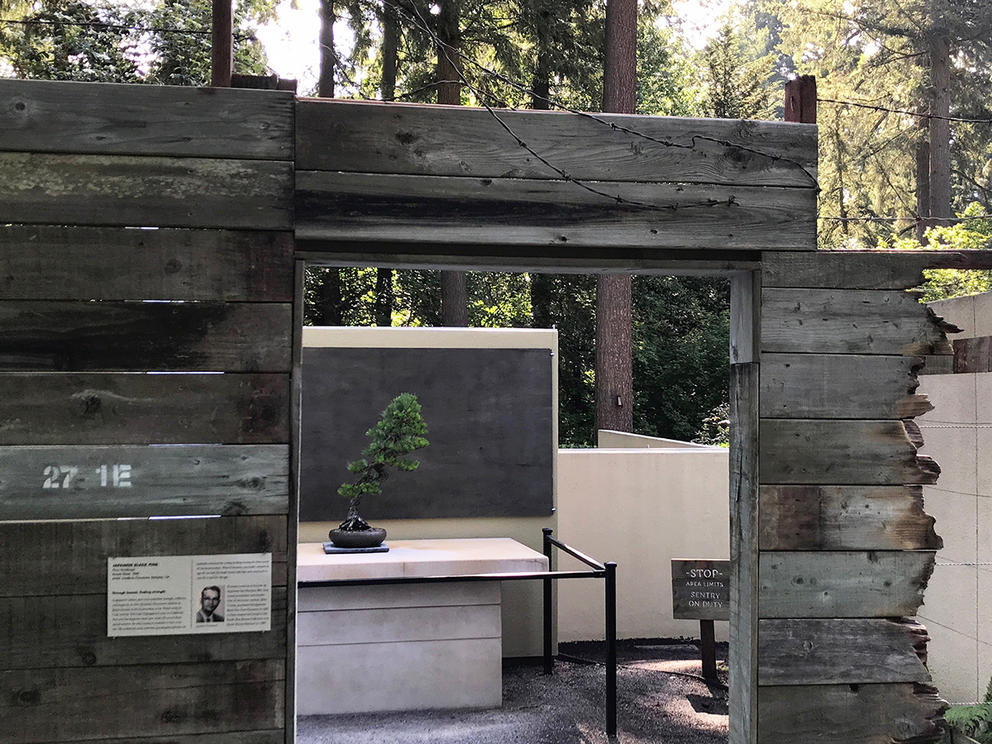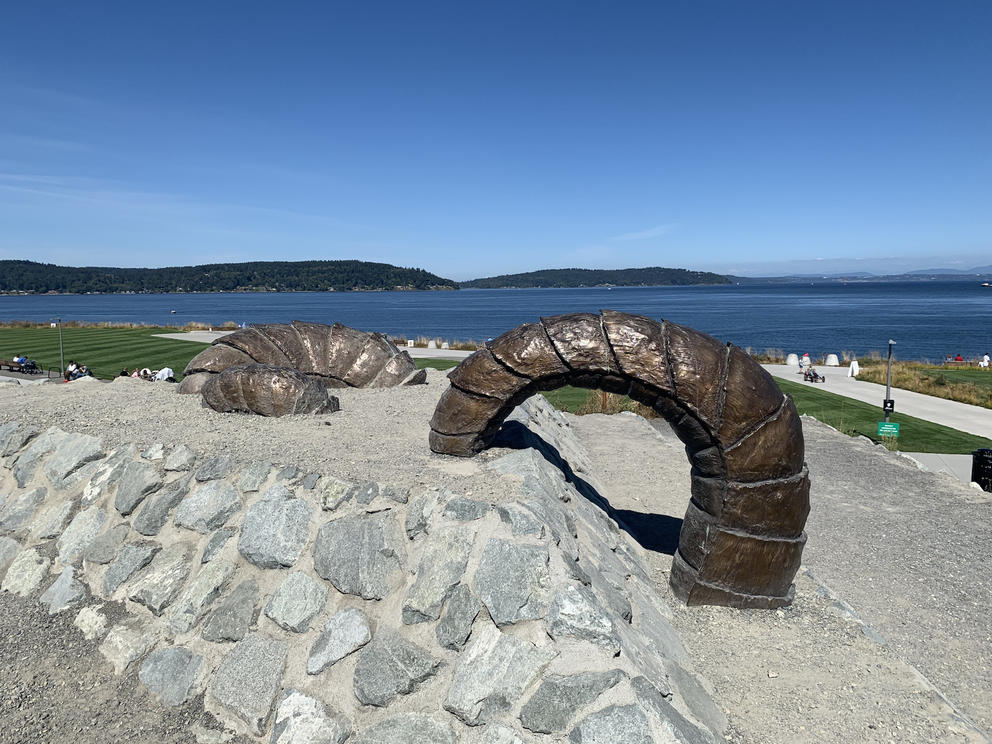Visiting the Ponderosa-pine-filled park made me long for more art amid trees, especially as summer fades into September and our days of warm outdoor wandering feel numbered. So upon returning I made a significantly shorter road trip to Federal Way to visit another place where art exists in the woods, the Pacific Bonsai Museum.
In this case the art also is the trees. The museum (where all exhibits are outdoors year-round) reopened in July after closing in March as a coronavirus precaution. As communications manager Katherine Wimble Fox told me, “We’re following the rules for the zoos, since we’re kind of like a zoo” — a zoo for trees.
The museum’s new and fascinating exhibit, World War Bonsai: Remembrance and Resilience (up through October 2021), coincides with the 75th anniversary of V-J Day (aka Victory over Japan Day, meaning the end of World War II, on Sept. 2, 1945). Of course that victory came at tremendous cost, which the exhibit explores by way of the Japanese American bonsai artists who were incarcerated in detention camps.
Each exquisitely cultivated tree is accompanied by the story of its artist. As anti-Japanese sentiment increased during wartime, many were forced to abandon, burn or hide their bonsai for fear of being targeted or arrested for practicing a Japanese tradition (and possibly being loyal to the “enemy”). When Executive Order 9066 came down in February 1942, some artists planted their trees in the ground, in hopes of returning to them after the war.
It’s crushing to read story after story of successful bonsai artists whose livelihoods and cultural traditions were suddenly obliterated. But it’s also an exhibit of hope — with these small trees serving as living proof of the power of perseverance. In particular, note the story of bonsai artist Juzaburo Furuzawa, who was incarcerated in Utah and California. His relatives sent him Japanese black pine seeds, which he sowed in the only container he had, a tin can. One of them flourished under his care. He nurtured the bonsai into his old age, and later donated it to the museum’s collection. It was stolen from the museum earlier this year, returned anonymously and is now on view, a literal signifier of growth, rebirth and survival.
While I was in the south Sound area, I stopped by another living symbol of renewal: the Dune Peninsula at Point Defiance Park, near Tacoma. Open since last July, the park sits on an Environmental Protection Agency Superfund site — where a smelter belched pollution into the surrounding air, land and water for nearly 100 years.
It took years to get the park project off the ground, but here it is and holy moly is it stunning. (I couldn’t believe I hadn’t been there before — don’t make the same mistake!) With soaring views of Puget Sound, seals balancing on rocky reefs just offshore, sweeping pathways for pedestrians and bicyclists, not to mention a clear sightline to Mount Rainier, which was being gloriously show-offy on the day I was there, it’s transformed from toxic slag heap to glittering gem.
And guess what, there’s art there, too. I first learned about the park from Northwest artist Adam Kuby, whose installation “Alluvion” now graces the 11-acre space. A nod to the location’s industrial past, the piece features a tall metal cylinder that recalls the smelter’s towering smokestack (once the largest in the world). The shape is progressively halved, and halved again, until there are only small, rusty fragments sitting in the scrubby grass. It’s surprisingly effective both in calling attention to the impact humans have had on the environment, and also the fact that when left alone long enough, nature will persevere, and take back its space.
At the top of one of the viewpoints is a playful nod to another of Tacoma’s claims to fame — science fiction writer Frank Herbert, who was born there 100 years ago this October. Herbert said growing up in the polluted city partly inspired his novel Dune (published in 1965), which became one of the bestselling science fiction titles of all time, and in turn inspired the name of the park. Considered the first big ecological sci-fi novel, Dune tackles subjects we’re in the thick of: climate change, the power of politics and economics, and the evolution of humanity.
Local artist Nichole Rathburn’s piece “Little Makers” features cast bronze sandworms arcing in and out of the earth, a reference to the Dune creatures that depleted the planet Arrakis of water. Included on a plaque next to artwork is a quote from Herbert: “A man inflicts himself on his environment.” Which, of course, can go either way — bombs or bonsai, pollution or parks.
Get the latest in local arts and culture
This weekly newsletter brings arts news and cultural events straight to your inbox.









